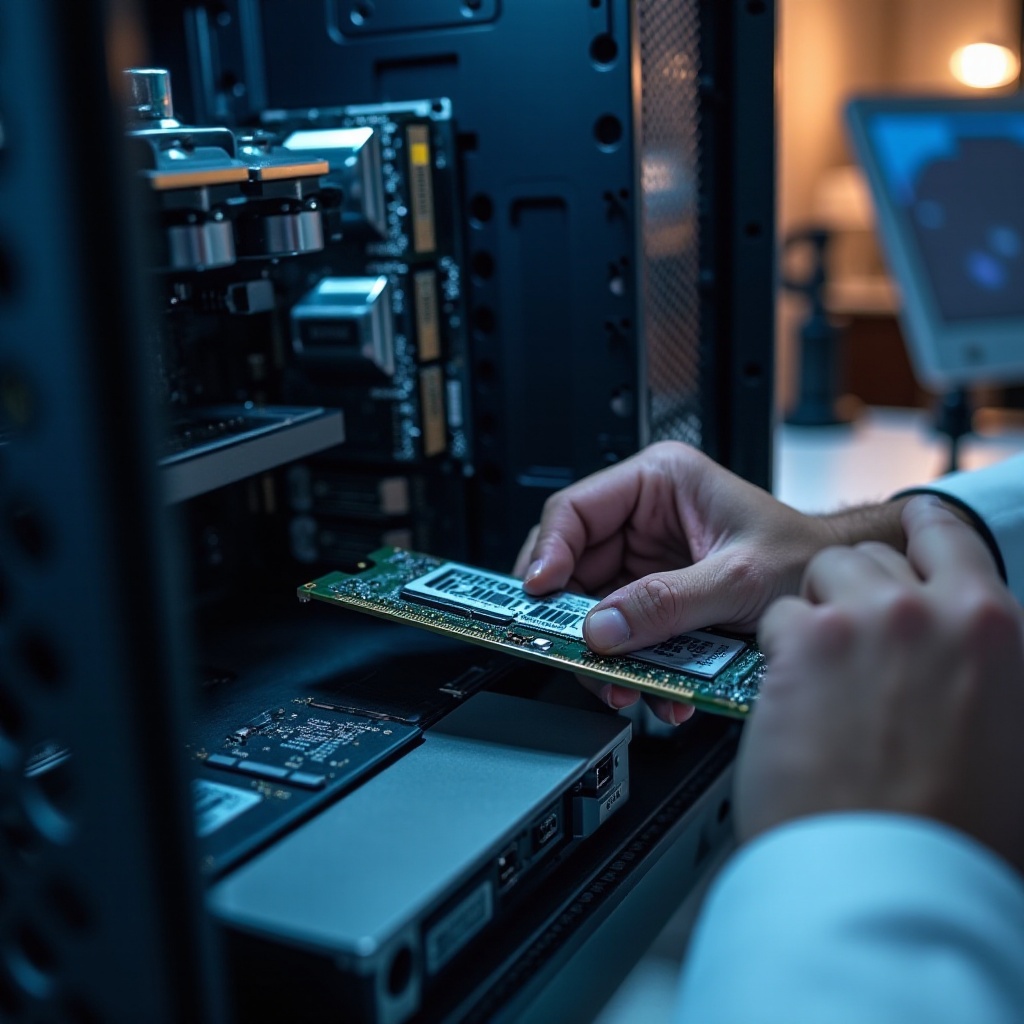Introduction
Every second is valuable when you’re powering up your computer to begin work or access crucial files. Slow boot times can be frustrating and waste precious time. Thankfully, various strategies exist to accelerate your computer’s boot process. Whether these involve hardware upgrades, software optimization, or routine maintenance, each approach can make a notable difference. Here, we’ll explore practical actions to heighten your computer’s startup speed and enhance overall performance.

Understanding Boot Times
Grasping what influences boot times is essential before seeking solutions. Boot time refers to the duration your computer takes to become fully functional following power-on. Factors such as outdated hardware, excessive startup programs, and software inefficiencies contribute to prolonged boot times. By identifying these factors, you can address issues more effectively. This understanding allows you to make informed decisions and efficiently optimize your computer’s startup process.
Hardware Upgrades for Faster Booting
Enhancing hardware is a reliable method for reducing boot times, significantly impacting your computer’s overall performance.
-
Upgrade to SSD (Solid State Drive)
Transitioning from a traditional hard disk drive (HDD) to a solid-state drive (SSD) drastically improves boot speed. SSDs eliminate moving parts, reducing the time required for your computer to access essential startup files. To upgrade, purchase a compatible SSD and transfer your operating system and critical data from the HDD to the SSD. This improvement alone can reduce your computer’s boot time significantly.
-
Increase RAM
Augmenting RAM (Random Access Memory) can also accelerate booting. RAM aids your computer in executing multiple processes more smoothly by providing additional space for active applications and systems. If your system lacks sufficient RAM, it struggles to manage startup processes effectively. To upgrade, ascertain the maximum RAM your system can support and consider adding modules for increased capacity.

Optimizing Software Settings
Beyond hardware, software configuration plays a pivotal role in enhancing boot performance. Optimizing these settings can yield immediate improvements.
-
Manage Startup Programs
Startup programs are applications that automatically launch when your computer boots. Overabundance in these slows your startup significantly. Manage them by accessing your task manager and evaluating each program’s necessity. Disabling non-essential applications from launching during startup can enhance speed.
-
Conduct Malware Checks
Malware and viruses negatively impact boot speed and overall system performance. Regular scans with reliable antivirus tools can detect and remove these threats. Cleaning malware not only strengthens security but also prevents resource consumption during boot.
Tweaking System and BIOS Settings
Fine-tuning system and BIOS settings can further optimize boot efficiency.
-
Update the Operating System and Drivers
Keeping your operating system and drivers updated ensures peak performance and security. Updates often include bug fixes and enhancements for improved startup times. Regularly check for updates and install them promptly for both the OS and device drivers.
-
Adjust BIOS Settings
The BIOS (Basic Input/Output System) manages the initial boot stages. Tweaking these settings can expedite startup times. Access BIOS by pressing a designated key during boot (such as F2, F10, or Delete) and activate features like Fast Boot. Exercise caution with BIOS changes as incorrect settings may affect stability.

Regular Maintenance Practices
Consistent maintenance helps in sustaining rapid boot times. Simple actions can keep your system efficient.
-
Clear Temporary Files and Bloatware
Over time, temporary files and unnecessary software accumulate, slowing system performance. Use built-in tools like Disk Cleanup on Windows to clear these files. Also, evaluate installed applications and uninstall any bloatware or unused programs.
-
Defragment and Optimize Drives (For HDDs)
For HDD users, defragmentation helps reorganize data for efficient access. Use built-in defragmentation tools for drive optimization. Note that SSDs do not require this process.
Advanced Techniques for Speed Boost
For tech-savvy individuals, advanced tweaks offer additional speed benefits.
-
Enable Fast Startup (Windows)
Windows includes Fast Startup, merging hibernation and shutdown features for quicker booting. Enable this in the Control Panel under Power Options for noticeable speed increases.
-
Tweak Advanced System Settings
Configuring advanced system settings like virtual memory and performance options can enhance speed. Explore System Properties and prioritize performance over appearance where feasible.
Conclusion
Implementing tips from this guide can transform your computer’s boot speed from sluggish to swift. Strategic hardware upgrades and intelligent software optimizations collectively reduce boot times, sustaining improved system efficiency. Regular cleaning and updates maintain your computer’s health, securing lasting performance enhancements.
Frequently Asked Questions
How often should I defragment my hard drive?
For optimal performance, defragment your hard drive every month if your computer uses an HDD. However, SSDs do not require defragmentation.
Can too many startup programs affect boot time?
Yes, having too many startup programs can significantly slow down your computer’s boot time. Review and disable non-essential programs to enhance speed.
What are some signs my computer needs a hardware upgrade?
If your computer shows sluggish performance, frequently crashes, or struggles to multitask, these may be signs it could benefit from a hardware upgrade, such as additional RAM or an SSD.